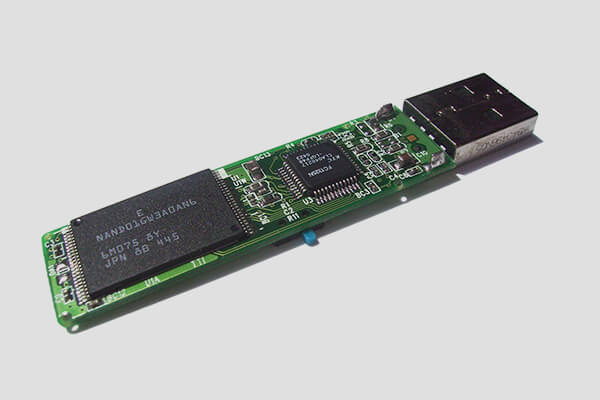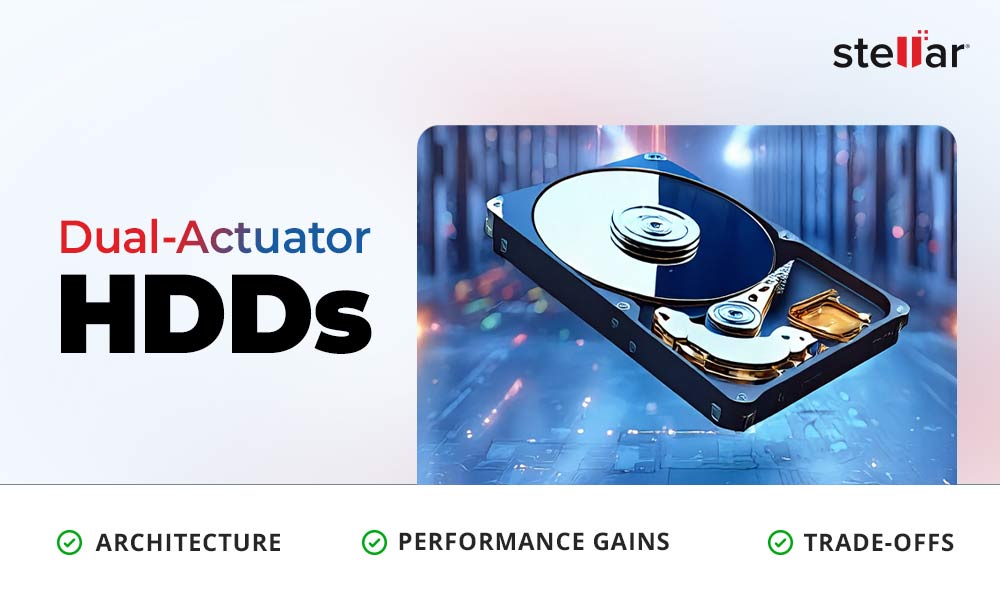When it comes to choosing a storage device such as hard disk drive, solid-state drive, or flash drive, the first question that comes to mind is how long does the device last. However, there is no definite answer to this question as the lifespan of a storage device depends on several factors, such as make and structure of the media, read and write cycle, usage, environment, etc. Below, we'll try to find out how long an HDD, SSD, and flash drive lasts.
Hard Disk Drive – How long does it last?

A hard disk drive (HDD) is a traditional data storage device that has moving parts, i.e., spinning disk and magnetic head. This means they may physically break down at some point, if not handled with care.
The lifespan of a hard disk drive depends on many factors, like brand, size, type, usage, etc. Also, the environmental factors, such as high temperature and humidity, can significantly affect your hard drive's life. Humidity may lead to the oxidization of internal components of HDD and a tiny amount of internal rusting can lead to the head crash. High temperature can damage the read/write heads, platters, and other mechanical components of the HDD, resulting in its failure.
With normal usage, a hard disk drive can last up to 3-5 years. However, hard drives at 7200 RPM have a shorter lifespan than the ones that spin at lower resolution.
Solid State Drive – How long does it last?

Solid-state drives (SSDs) are newer storage devices that do not have moving parts. Due to this, they are less likely to be impacted by wear and tear, making them more durable as compared to HDDs.
The lifespan of SSDs usually depends on the number of read/write cycles (also known as P/E cycles), among other factors. Therefore, the more you write to an SSD, the sooner it will fail or die. Each SSD has a limited number of P/E cycles, usually in the range of 10,000 to 100,000. Each P/E cycle slowly degrades the memory of SSD's cells until they are worn out. When the cells are completely worn out, you will no longer be able to store information on SSD as it breaks down into read-only mode.
The lifespan of solid-state drives depends on the age of the drive, the number of TB written over time, and write cycles per day. However, you can even calculate the lifespan of an SSD with the help of the following formula:
(Write cycles * Capacity) / (SSD factor * amount of data written per year)
In some cases, this number may come out to hundreds of years. However, the lifespan of an SSD is 8-12 years with normal usage.
Flash Drive – How long does it last?

Flash drive is an ultra-portable and durable storage device that has no moving parts. Flash drive, just like SSD, uses flash memory to read and write data. Thus, among other factors, flash drives' lifespan also depends on the number of write/erase cycles. The maximum write/erase cycles or longevity of flash drives depends on the quality of material used in the drive, type of connector used, and overall build quality of the protective shell and its circuits.
Most flash drives can withstand 3,000 to 5,000 write/erase cycles, depending upon the type of memory chip used. The estimated lifespan for flash drives is typically ten years - an estimate based on an average yearly write/erase cycles. Moreover, how you use flash drives also affects their longevity.
Tips to Prolong the Lifespan of Hard Disks, SDDs, and Flash Drives
Now the question arises, how can you make your storage media last longer? By adopting some best practices mentioned below, you can ensure that your hard drive, solid-state drive, and flash drive lasts longer.
- Avoid Extreme Temperature
Most HDDs can operate safely in a temperature ranging from 5º to 55º C (41º to 122º F). The actual operating temperature range in SSD varies based on the make and model of the disk, but it ranges from 0º to 70º C (32º to 158º F). The flash storage can operate safely in temperatures as low as -40º C or as high as 85º C.
This is why you regularly track the temperature of your drives to avoid sudden disk failure. For this, you can use a drive monitor tool to regularly monitor the temperature of your HDDs, SSDs, and flash drives. It provides notifications when the temperature exceeds the normal range.
- Avoid Power Outage
Frequent power outages can reduce the lifespan of your hard disk drive because the read and write head that hovers over the spinning platter will snap back to its original position, increasing the chances of a head crash. This tiny imperfection, where the head scrapes the platter surfaces when accumulated over time, can lead to data loss and corruption.
However, sudden power cuts while using SSDs and flash drives can lead to data corruption and malfunction of these drives. Therefore, you must use Uninterruptable Power Supply (UPS) to prevent power outage damage in SSDs and flash drives.
Conclusion
The lifespan of SSDs, HDDs, and flash drives primarily depends on the usage and read/write cycles. HDDs are more fragile because of their moving parts which make them susceptible to damage and eventually affecting their lifespan. On the other hand, SSDs and flash drives have definite P/E cycles. After crossing the P/E cycles limit, these drives may no longer work and eventually fail. However, with proper care and usage, you can make your hard drives, SSDs, and flash drives last longer.
In case you lost data from your HDD, SSD or flash drive, you can use a data recovery software such as Stellar Data Recovery Professional for Windows to recover the data.













 8 min read
8 min read





